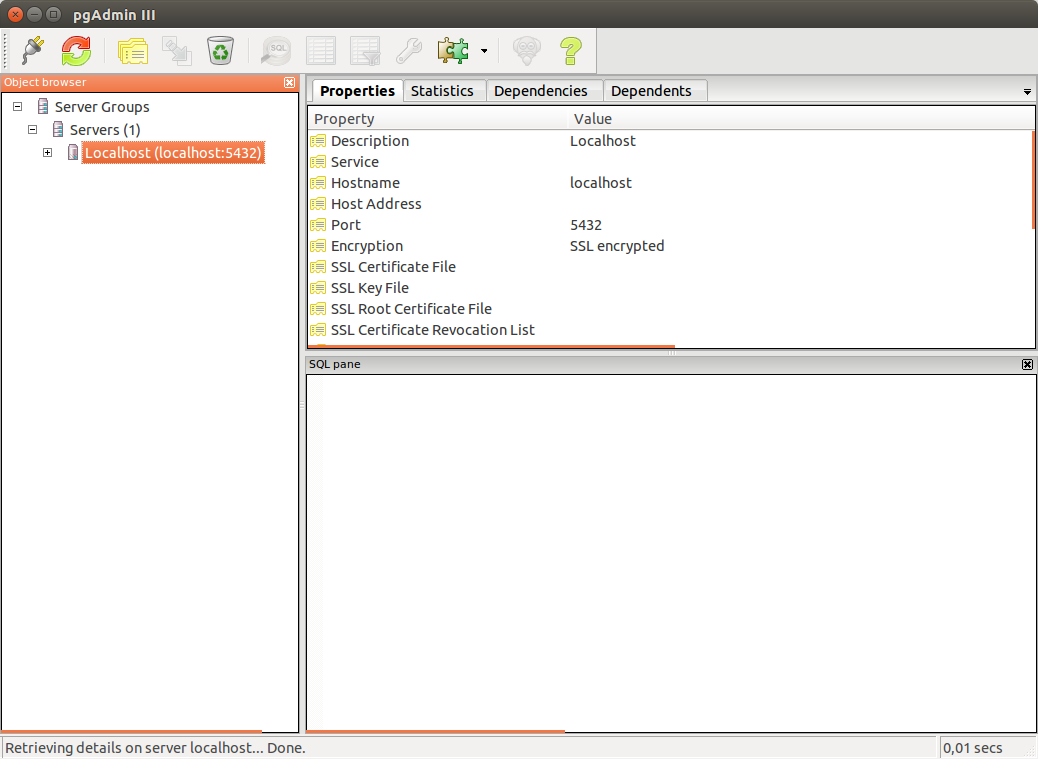

- #Install postgresql ubuntu how to
- #Install postgresql ubuntu install
- #Install postgresql ubuntu software
- #Install postgresql ubuntu free
The -interactive flag will prompt you for the name of the new role and also ask whether it should have superuser permissions. You can create new roles from the command line with the createrole command. Step 3 - Creating a New RoleĬurrently, you just have the postgres role configured within the database. Many use cases require more than one Postgres role. This will log you directly into Postgres without the intermediary bash shell in between.Īgain, you can exit the interactive Postgres session by typing: You could alternatively do this in one step by running the single command psql as the postgres user with sudo, like this: In the last example, you were instructed to get to the Postgres prompt by first switching to the postgres user and then running psql to open the Postgres prompt. Accessing a Postgres Prompt Without Switching Accounts This will bring you back to the postgres Linux command prompt.
#Install postgresql ubuntu free
This will log you into the PostgreSQL prompt, and from here you are free to interact with the database management system right away.Įxit out of the PostgreSQL prompt by typing: You can now access a Postgres prompt immediately by typing: Switch over to the postgres account on your server by typing: There are a few ways to use this account to access Postgres. In order to use Postgres, you can log into that account. The installation procedure created a user account called postgres that is associated with the default Postgres role. If a role exists within Postgres, a Unix/Linux username with the same name is able to sign in as that role. Upon installation, Postgres is set up to use ident authentication, meaning that it associates Postgres roles with a matching Unix/Linux system account. These are, in some ways, similar to regular Unix-style accounts, but Postgres does not distinguish between users and groups and instead prefers the more flexible term “role”. Step 2 - Using PostgreSQL Roles and Databasesīy default, Postgres uses a concept known as roles to handle authentication and authorization.
#Install postgresql ubuntu software
Now that the software is installed and running, we can go over how it works and how it may be different from similar database management systems you may have used.
#Install postgresql ubuntu install
sudo apt install postgresql postgresql-contribĮnsure that the server is running using the systemctl start command:.Then, install the Postgres package along with a -contrib package that adds some additional utilities and functionality: Since this is your first time using apt in this session, refresh your local package index. Ubuntu’s default repositories contain Postgres packages, so you can install these using the apt packaging system. Click the following Launch an Interactive Terminal! button to get started. You can also use an interactive terminal that is embedded on this page to experiment with installing and configuring PostgreSQL in this tutorial. After completing this prerequisite tutorial, your server should have a non- root user with sudo permissions and a basic firewall. To follow along with this tutorial, you will need one Ubuntu 18.04 server that has been configured by following our Initial Server Setup for Ubuntu 18.04 guide.
#Install postgresql ubuntu how to
This guide demonstrates how to install Postgres on an Ubuntu 18.04 VPS instance and also provides instructions for basic database administration. It is a popular choice for many small and large projects and has the advantage of being standards-compliant and having many advanced features like reliable transactions and concurrency without read locks. PostgreSQL, or Postgres, is a relational database management system that provides an implementation of the SQL querying language. They provide a structured way to store, organize, and access information.

Relational database management systems are a key component of many web sites and applications.


 0 kommentar(er)
0 kommentar(er)
